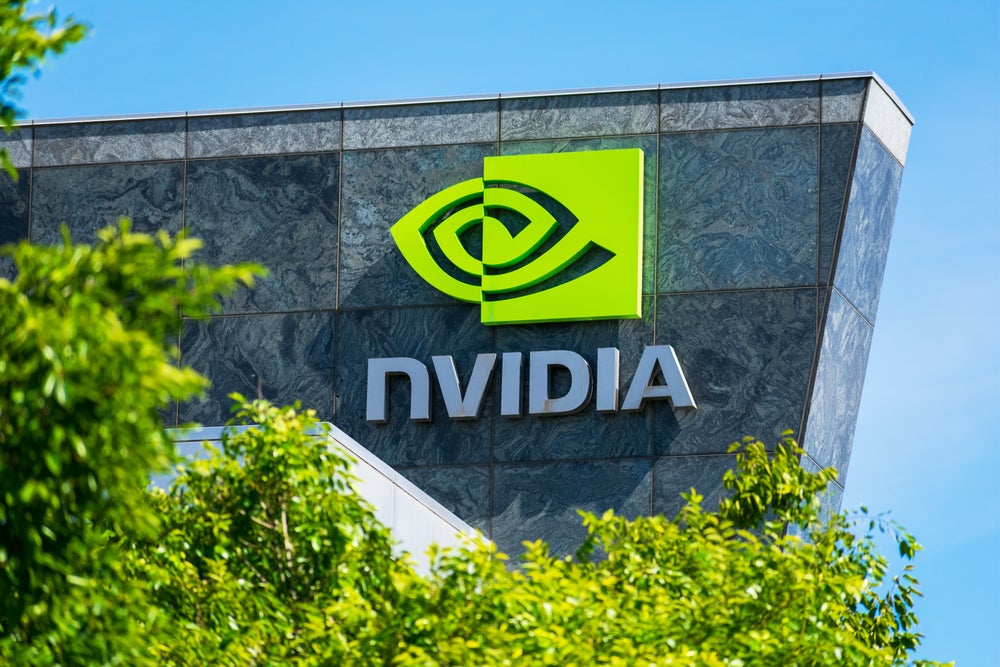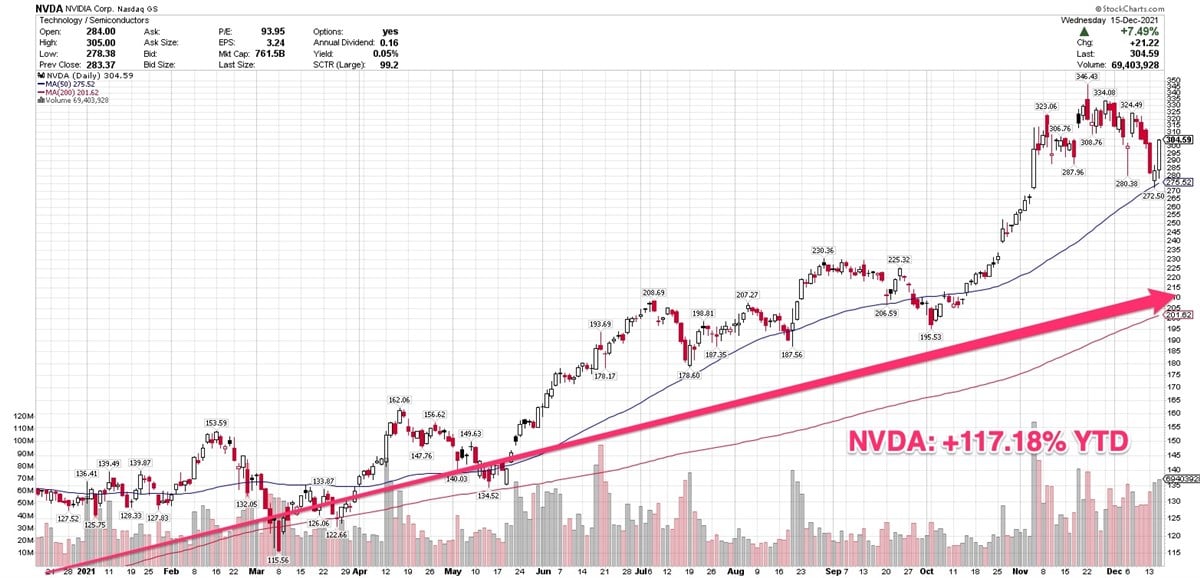Nvidia Shares Up 11% This Week On New Supercomputing Chip Shares of graphics chip maker Nvidia (NASDAQ: NVDA) jumped 11% this week after the company announced its new Grace chip created specifically for artificial intelligence data centers.
By Kate Stalter
This story originally appeared on MarketBeat

Shares of graphics chip maker Nvidia (NASDAQ: NVDA) jumped 11% this week after the company announced its new Grace chip created specifically for artificial intelligence data centers.
The company said the new chip would bring 10 times the performance of the fastest servers now available on complex AI networks and other high-performance applications.
The new chip is based on designs from Arm, a U.K. chipmaker that Nvidia is attempting to purchase in a deal valued at around $40 billion. That transaction has run into regulatory hurdles, but there's no indication that would halt the development of the Grace chip.
Nvidia chips have been used for lifelike virtualization in video games. As a specialized producer, its revenue lags that of Intel (NASDAQ: INTC), whose chips are used in a wider array of electronics gear.
However, in a stroke of luck for Nvidia, the chips it makes can also be used for applications such as machine learning, mining of cryptocurrencies and self-driving vehicles, all hot trends that are sure to grow.
Shares are up 414% since the end of 2018, and Nvidia's market capitalization of $395.90 billion is higher than Intel's market cap of $263.97 billion.
Not only that, but Nvidia's earnings and revenue grew at a faster clip recently. While Intel's top- and bottom-line growth slowed in the past two quarters, Nvidia's earnings grew at rates between 63% and 136% in the past five quarters. Sales grew between 39% and 61% during that time, with growth accelerating in the past four quarters.
A-list customers and in-demand applications have been driving that stellar performance. Amazon (NASDAQ: AMZN) uses Nvidia chips in its data centers, and in January, Nvidia said China-based electric vehicle maker Nio (NYSE: NIO) would use its Drive system-on-a-chip product for its next generation of vehicles with automated driving capabilities.
The new chip is named for pioneering computer scientist Grace Hopper. Nvidia expects to launch the product in 2023. That long runway is a good illustration of markets as forward-looking mechanisms, with investors already excited about future prospects for the chip. New supercomputing centers are already in the works around the world, so the customer base already exists. Investors may start seeing orders for the Grace chip show up in Nvidia's quarterly reports before the actual launch.
With this week's uptrend, Nvidia broke out of a cup-shaped base that began in mid-February. The semiconductor industry as a whole has been correcting since then, partly on concerns about revenue due to a global chip shortage. Although some chip manufacturers were able to raise prices due to the supply and demand equation, investors still fretted that lack of supply would result in limits on actual sales.
Some good news for the broader sector arrived earlier this month, as Taiwan Semiconductor Manufacturing (NYSE: TSM) announced a $100 billion expansion project that would help ease the global shortage.
On the heels of that news, Nvidia began a low-volume rally that propelled the stock above its 10-week moving average.
Trading volume picked up with Monday's news about the Grace chip, as Nvidia shares vaulted 5.62% in turnover 157% above average. This week brought the heaviest trading volume since October.
That heavy upside trade is ideal; it signals that institutional investors are snapping up shares on the promise of greater performance ahead.
On Tuesday, Nvidia cleared the cup base's buy point above $610.90 in heavy volume, but below Monday's session. The stock is still in a buy range, as it's less than 5% above that pivot point, and the heavy trading volume along with strong fundamentals make it an attractive buy candidate.
Shares climbed another 5.63% Thursday, as the semiconductor industry rallied along with the broader market. The stock pulled back slightly Friday, but that can easily be attributed to some limited profit taking after the big run-up.
One caveat about the chip industry as a whole: Semiconductor stocks can be volatile, and are sensitive to geopolitical and regulatory actions. That said, the world is only growing more dependent on chips with every passing month, which means these stocks will continue to be in high demand over time. 
NVIDIA is a part of the Entrepreneur Index, which tracks some of the largest publicly traded companies founded and run by entrepreneurs.









